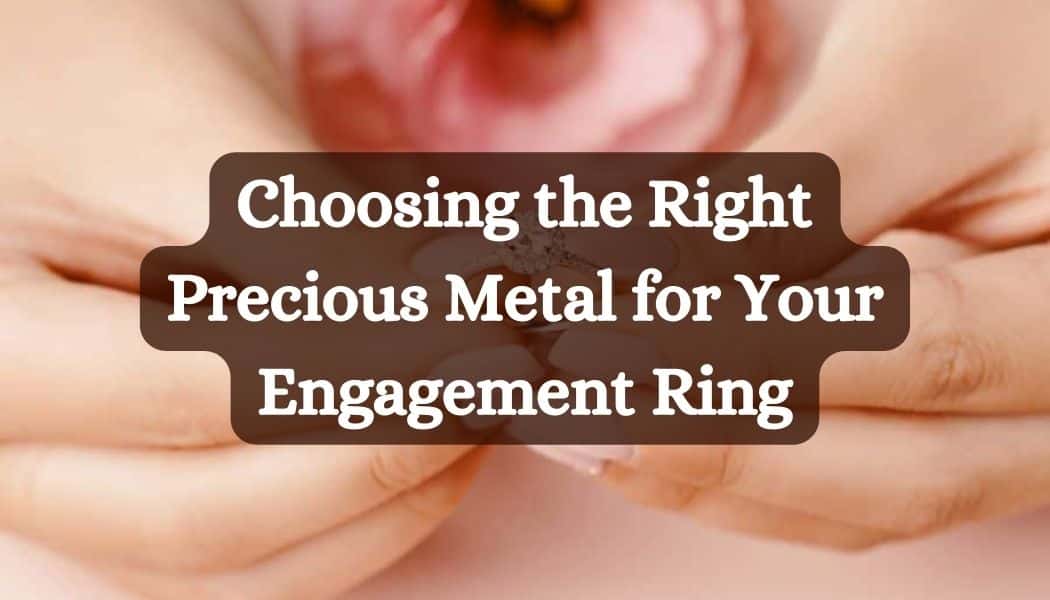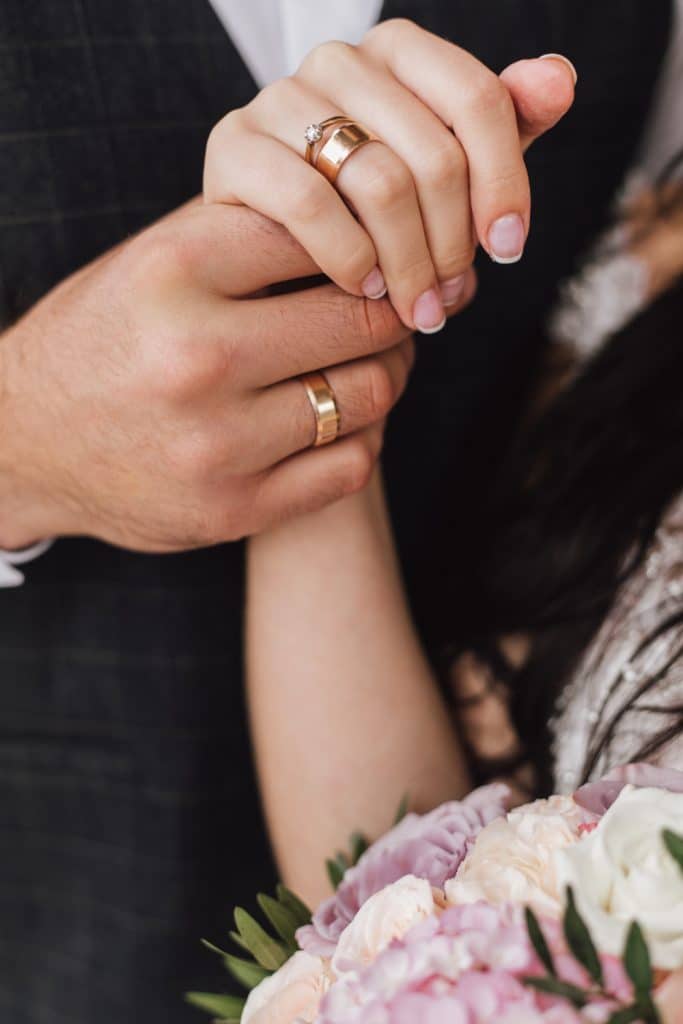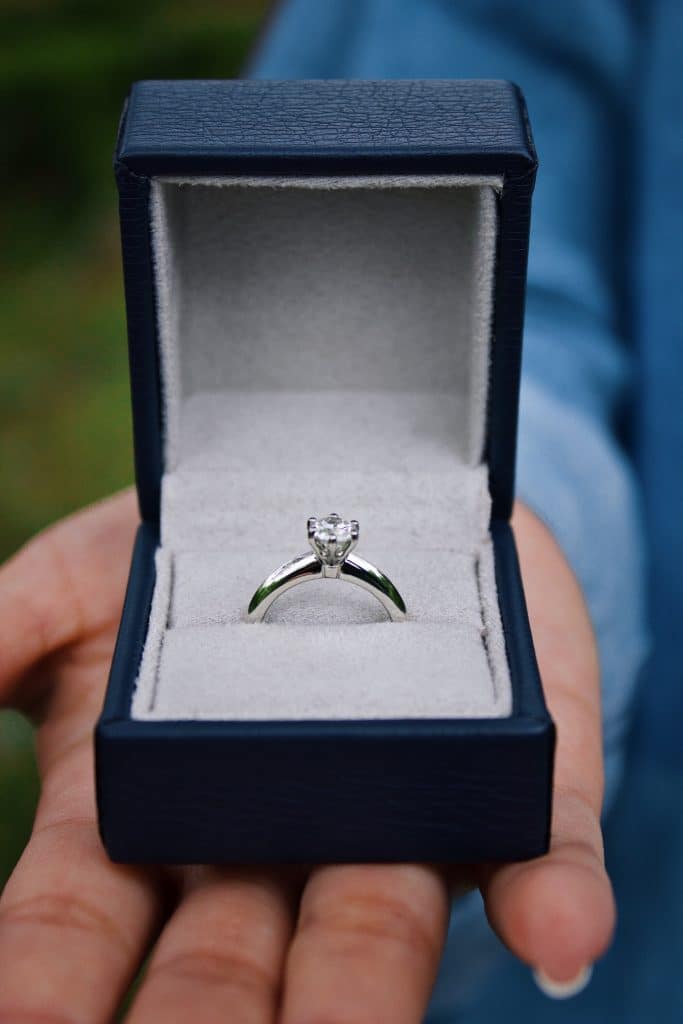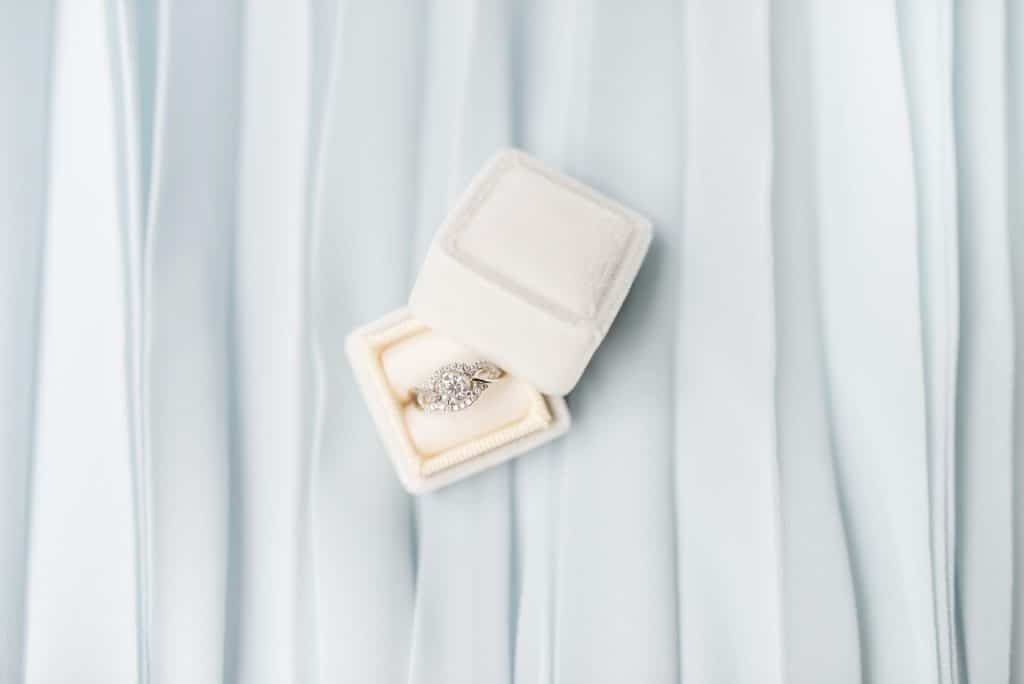
Selecting the perfect engagement ring is a once-in-a-lifetime occasion. A world of options is available, but one of the most important parts is choosing a precious metal for the band.
There are dozens of options on the market. From classic gold to the modern elegance of platinum, more affordable silver, or alternatives such as titanium and timber.
In this article, our experts explain the intricacies of each precious metal, helping you decide before buying engagement rings.
Table of Contents
Which Precious Metal Should You Choose?
Gold, White Gold & Rose Gold
Gold, white gold, and rose gold are the most popular metals for wedding and engagement rings.
It has been treasured for its rarity, durability and timeless beauty for centuries. It holds immense value and symbolism, making it a popular choice for expressing love and commitment. Gold is a stunning material that looks incredible when paired with diamonds, sapphires, rubies and other precious stones.
This offers plenty of flexibility in designing a setting your fiance will love.
White gold, created by alloying pure gold with white metals like palladium or silver, offers a sleek and contemporary alternative to yellow gold. The modern appeal of white gold complements a wide range of gemstones, but it is trendy when paired with diamonds.
While the material is soft, white gold is durable and a more affordable alternative to platinum.
Finally, there is rose gold, which is created by adding copper to yellow gold. This imparts a pinkish hue to the ring, adding a romantic and vintage charm. Rose gold is an excellent choice for those seeking a unique, warm-toned metal.
Any of these metals will provide a versatile canvas that showcases diamonds and other precious gemstones, allowing you to personalize your engagement ring to reflect your unique love story.

Sterling Silver
While silver is not traditionally used for engagement rings, it has gained popularity for the simplicity and affordability of the material.
The affordability of silver allows couples to invest more in the size and quality of gemstones, which makes the ring just as striking. Silver’s bright and reflective nature also enhances the sparkle of diamonds and other gemstones. This helps to create a stunning and eye-catching piece of jewellery.
Not all silver is created equal, though. The most popular kind of silver – sterling silver – is actually an alloy of silver and copper. While this reduces the purity, it dramatically increases the durability and beauty of the metal. That makes sterling silver the metal of choice for engagement rings intended to be worn daily.
Silver is an especially good choice for couples who opt for silver wedding bands. A silver engagement ring will stack perfectly with the wedding band, and you won’t sacrifice the beauty or durability of either ring.
Platinum
Platinum has become a highly popular metal for engagement rings due to its exceptional beauty, durability and rarity.
It is renowned for its natural white colour. It’s rough, beautiful and ideal for engagement rings that will be worn for decades. In particular, it’s density makes it highly durable and resistant to wear and tear.
For those with metal allergies, platinum is also hypoallergenic, making it suitable for sensitive skin and prolonged wear.
Its rarity and the labour-intensive extraction process add to the allure of platinum. For many couples, it symbolizes the uniqueness and exclusivity of the love it represents. The enduring value of platinum, its timeless beauty, and its ability to withstand the test of time make it a cherished metal for engagement rings.
Titanium
Due to its contemporary appeal, titanium has become a popular material for engagement rings. Its exceptional strength and durability make it an ideal choice for a symbol of enduring love and commitment.
Titanium rings are incredibly lightweight, so they’re comfortable for daily wear. Its natural dark grey or blackish colour adds a unique and modern aesthetic to engagement rings. It’s often paired with diamonds or other gemstones to create striking contrasts.
Furthermore, titanium is highly resistant to corrosion and tarnish, ensuring the ring maintains its beauty even with daily wear.
Titanium engagement rings symbolize a modern, robust, distinctive commitment, making them a popular choice for contemporary couples.
Alternative Ring Materials
In recent years, alternative materials have gained popularity in creating unique and unconventional engagement rings.
For example, timber engagement rings are a fantastic alternative to metals like gold or silver. Timber is easy to work with and has a rustic, eco-friendly appeal. It’s most popular with men, but timber rings suit everybody.
Metals such as tungsten create a rigid ring with a darkened hue if you want a more rugged material. This creates a masculine and contemporary look. While using tungsten for engagement rings is rare, it is often used to make long-lasting wedding bands.
Finally, there is carbon fibre, known for its incredible strength and lightweight properties. Carbon fibre rings have a modern, high-tech aesthetic that blends subtle details with dark shades.
These alternative materials provide various design options that allow you to craft an engagement ring unique to your loved one.
Choosing a Metal that Complements the Style of Your Ring
The metal you choose is a statement all of its own, but it’s also the canvas for the rest of the ring’s design.
That means you need to choose a precious metal that complements your ring’s stones, setting and style. This requires a little bit of design know-how. The good news is that jewellers carry a vast range of options, making it easy to select a piece that looks fantastic.
Even better, most precious metals look good with most cuts of diamonds. The big thing to remember is that the diamond’s quality, clarity and colour can be affected by the ring’s metal.
For example, white metals such as platinum can amplify discolouration in a yellowed diamond. Similarly, rose gold pairs better with vintage cuts like pear, marquise and Asscher diamonds.
You can ask your jeweller if you don’t know much about ring design. They’ll be able to recommend a precious metal, diamond and setting that looks beautiful without breaking the bank.
White Gold vs Platinum
Platinum has become one of the most popular metals for wedding and engagement rings. It’s beautiful, durable and the perfect symbol of undying love.
But it’s also a rare material, making it one of the most expensive options. As an alternative, many couples opt for white gold instead. White gold is coated in rhodium, a white metal that looks remarkably similar to platinum.
White gold rings are a great way to save a little bit of money without sacrificing the looks and durability of your wedding rings. Here’s a quick comparison to help you choose:
| White Gold | Platinum | |
| Price | $$ | $$$ |
| Durability | White gold wedding rings are plated with rhodium. Rhodium is durable but will scratch and wear off over time. | Platinum is highly durable and resistant to everyday wear. It will scratch over time, but scratches can be polished easily. |
| Chemical resistance | Susceptible to damage from cleaning products and acids. Exposure to household chemicals can cause your rings to discolour. | Platinum is inert and very resistant to most chemicals. Platinum rings should be removed before swimming. |
| Care requirements | The rhodium plating on white gold wedding and engagement rings needs to be renewed every 2-4 years. Rings should also be regularly cleaned and polished. | Platinum has very low care requirements. It may dull over time as the metal scratches and develops a patina, but this can be polished by a jeweller. |
Mixing Metals in Your Wedding Stack
Choosing a precious metal for your engagement ring doesn’t happen in a vacuum!
Your ring needs to match the precious stones, setting, and your taste in jewellery. But it also needs to match the rest of your wedding stack.
A wedding stack comprises your engagement ring, wedding ring and eternity ring. These three rings symbolize your relationship, so they’re typically designed to fit together on your finger.
Traditionally, wedding bands and engagement rings are made of the same metal. That means you should consider how you want your wedding bands to look.
While it’s not a requirement, many couples choose to wear matching wedding bands. Talk to your partner about their preference for wedding bands and see if you can agree. This will impact the metal you choose for your engagement ring.
No hard and fast rules exist about matching engagement rings and wedding bands. You can choose the same precious metal for both rings, mix and match metals, or you and your partner can wear different wedding bands. The choice is up to you!

Caring for Your Engagement Ring
Finally, we must consider the long-term care requirements for your wedding and engagement rings.
As mentioned above, the metal you choose for your rings can affect their longevity but also affect care requirements. Softer metals (such as silver and gold) are more prone to scratches, dents, and the development of a patina. More rigid metals (such as platinum and white gold) are less prone to these issues and require less care.
But, regardless of the precious metals you choose, you’ll need to keep your ring clean and have it serviced by a jeweller every year or two. A jeweller will ensure the setting is secure, inspect the rings for imperfections, and polish away issues such as scratching.
In between professional cleaning, you can keep your ring clean by washing it with a mild soap. Washing the ring with soap reduces the buildup of skin oils. That will make your wedding rings and precious stones shine brighter, preventing grit from lodging in the ring and causing scratches.
FAQ: Choosing the Right Precious Metal for Your Engagement Ring
What are the most popular precious metals for engagement rings, and what are their characteristics?
Gold, white gold, and rose gold are the most popular choices. Gold is treasured for its durability and timeless beauty, ideal for classic designs and pairing with various gemstones. White gold, an alloy with white metals, offers a sleek, contemporary look and is popular with diamond settings. Rose gold, with its pinkish hue due to copper addition, adds a vintage charm.
Why might someone choose platinum for an engagement ring?
Platinum is favored for its exceptional beauty, durability, and rarity. Its natural white color and density make it highly durable and suitable for long-term wear. It’s also hypoallergenic, making it ideal for sensitive skin. Platinum’s rarity and enduring value symbolize the uniqueness and strength of a relationship.
Are there affordable alternatives to traditional precious metals for engagement rings?
Yes, alternatives like sterling silver, titanium, and alternative materials like timber and tungsten offer affordability and unique aesthetic choices. Sterling silver is affordable and enhances the sparkle of gemstones, while titanium is known for its strength, light weight, and modern appeal. Timber, tungsten, and carbon fiber are also gaining popularity for their unique properties and designs.
How should the choice of metal complement the style of the engagement ring?
The precious metal should enhance the ring’s stones, setting, and overall style. Different metals can affect the appearance of the diamond’s color and clarity. For instance, white metals can amplify discoloration in diamonds, while rose gold pairs well with vintage cuts. Consulting with a jeweller can help in selecting a metal that complements the design and gemstone choice.













Choosing the right metal for an engagement ring is truly a personalized journey, and your comprehensive breakdown of various options here is incredibly helpful. Your expertise in detailing each metal’s characteristics and how they complement different styles and gemstones is invaluable for couples embarking on this meaningful decision. It’s a fantastic guide for anyone seeking a perfect ring that not only symbolizes love but also aligns with their unique style preferences.